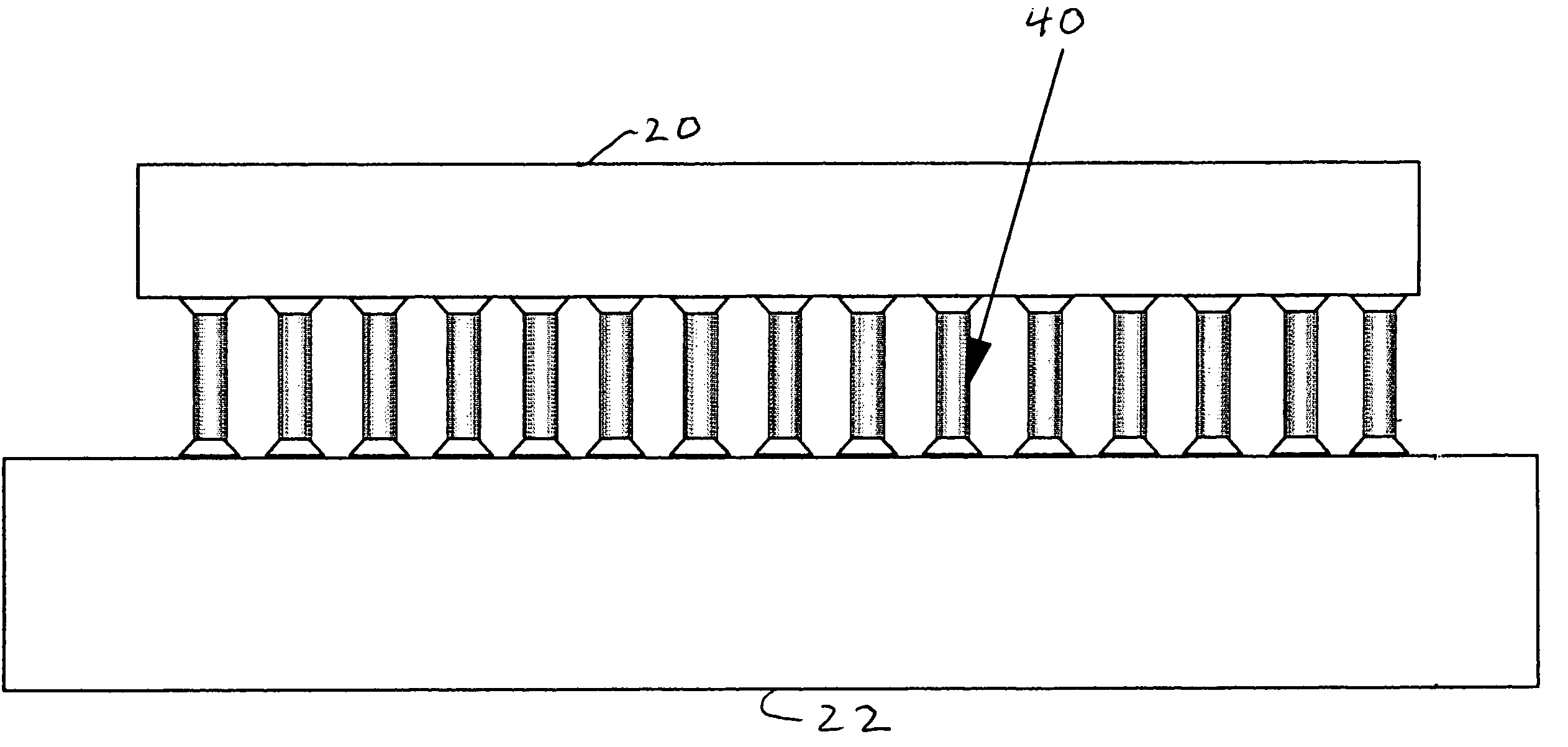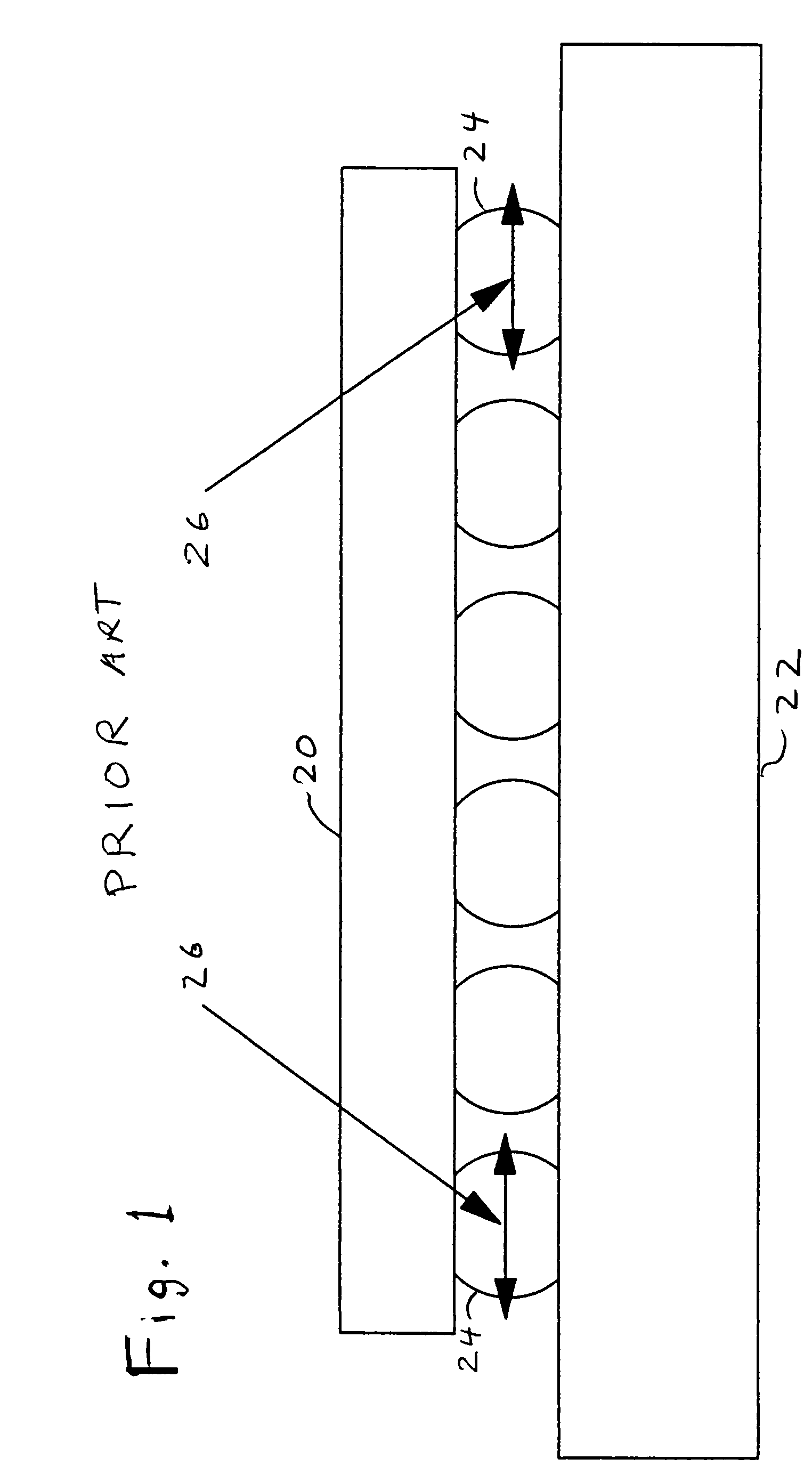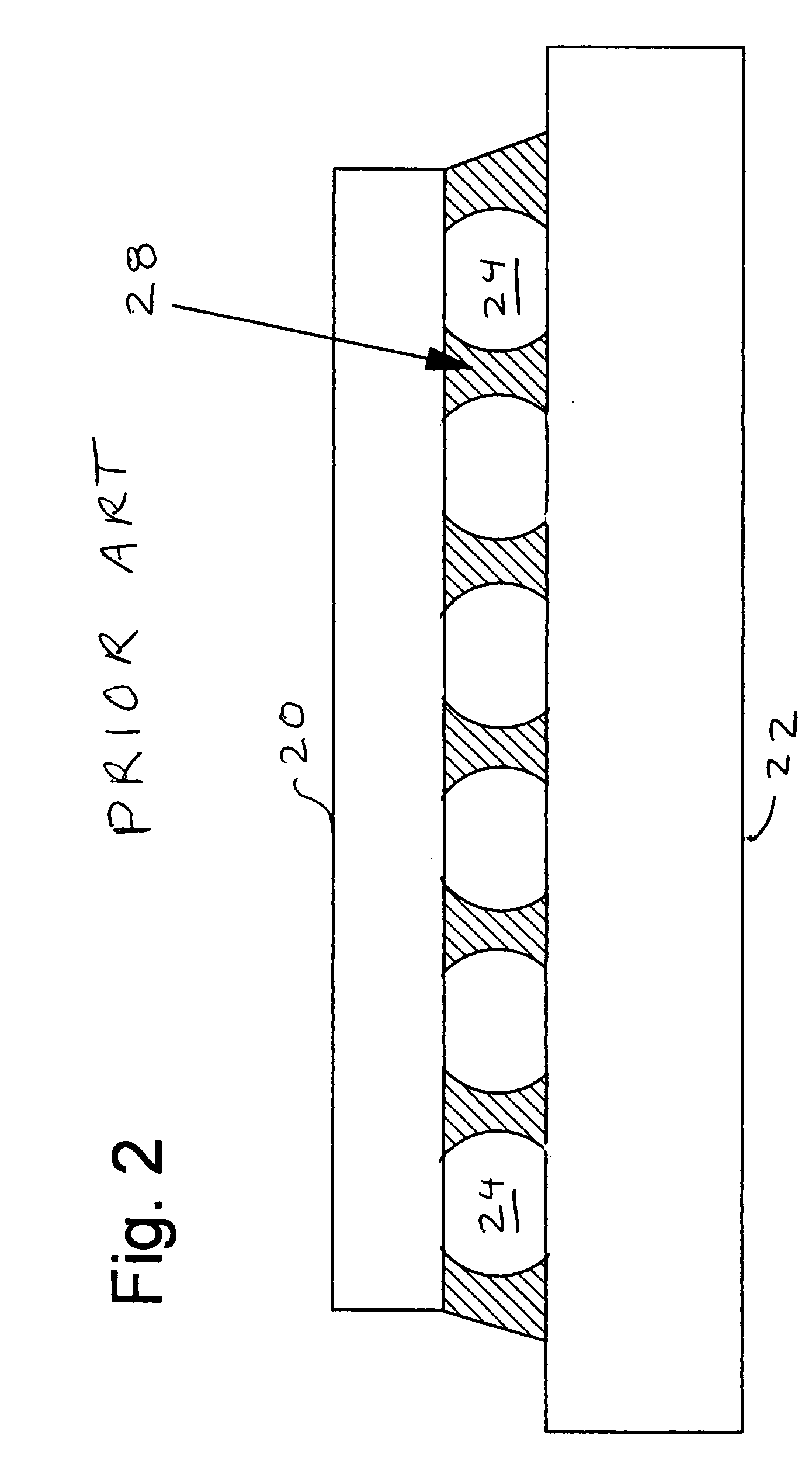Solder interconnect structure and method using injection molded solder
a technology of injection molded solder and interconnects, which is applied in the direction of soldering apparatus, sustainable manufacturing/processing, and final product manufacturing, etc., can solve the problems of thermal fatigue failure of the solder joints, and reduced spherical solder joints. , to achieve the effect of improving current carrying capacity, facilitating underfill reinforcement of the interconnects, and facilitating chip and substrate stando
- Summary
- Abstract
- Description
- Claims
- Application Information
AI Technical Summary
Benefits of technology
Problems solved by technology
Method used
Image
Examples
example 1
[0057]A preferred structure for improved flip chip interconnects may have cylindrical solder columns of diameter of 25-150 microns, preferably 50-100 microns. The interconnects may be 100-600 microns long, with an aspect ratio of length to diameter of 1.5:1-10:1, with a preferred range of 2:1 to 4:1. The method of fabrication of the interconnects can be described as follows.
[0058]A rectangular or square mold plate is patterned with an array of preferably cylindrical cavities. The mold plate can be of borosilicate glass, or be a composite of a laser machined polymer layer and glass, as disclosed in U.S. patent application Ser. No. 11 / 168,182, entitled Composite Solder Transfer Moldplate Structure and Method of Making Same, which is assigned to the same assigned as the present invention and is incorporated herein in its entirety. Further, the moldplate can be of a size to encompass a 200 mm or 300 mm wafer pattern such that the array of cavities exactly matches the array of electrical...
example 2
[0061]Another preferred structure for improved flip chip interconnects is one in which a copper wire of diameter 25-100 microns is embedded in a solder column of diameter 50-150 microns. The interconnects may be 100-600 microns long, with an aspect ratio of length to diameter of 1.5:1-10:1, with a preferred range of 2:1 to 4:1. The method of fabrication of the interconnects can be described as follows.
[0062]A rectangular or square mold plate is patterned with an array of preferably cylindrical cavities. The mold plate can be of borosilicate glass or be a composite of polymer and glass, as disclosed in U.S. patent application Ser. No. 11 / 168,182, entitled Composite Solder Transfer Moldplate Structure and Method of Making Same, which is incorporated herein in its entirety. Further, the moldplate is of a size to encompass a 200 mm or 300 mm wafer pattern such that the array of cavities exactly matches the array of electrical connection pads on the wafer to which the flip chip interconn...
PUM
| Property | Measurement | Unit |
|---|---|---|
| aspect ratio | aaaaa | aaaaa |
| diameter | aaaaa | aaaaa |
| width aspect ratio | aaaaa | aaaaa |
Abstract
Description
Claims
Application Information
 Login to View More
Login to View More - R&D
- Intellectual Property
- Life Sciences
- Materials
- Tech Scout
- Unparalleled Data Quality
- Higher Quality Content
- 60% Fewer Hallucinations
Browse by: Latest US Patents, China's latest patents, Technical Efficacy Thesaurus, Application Domain, Technology Topic, Popular Technical Reports.
© 2025 PatSnap. All rights reserved.Legal|Privacy policy|Modern Slavery Act Transparency Statement|Sitemap|About US| Contact US: help@patsnap.com



